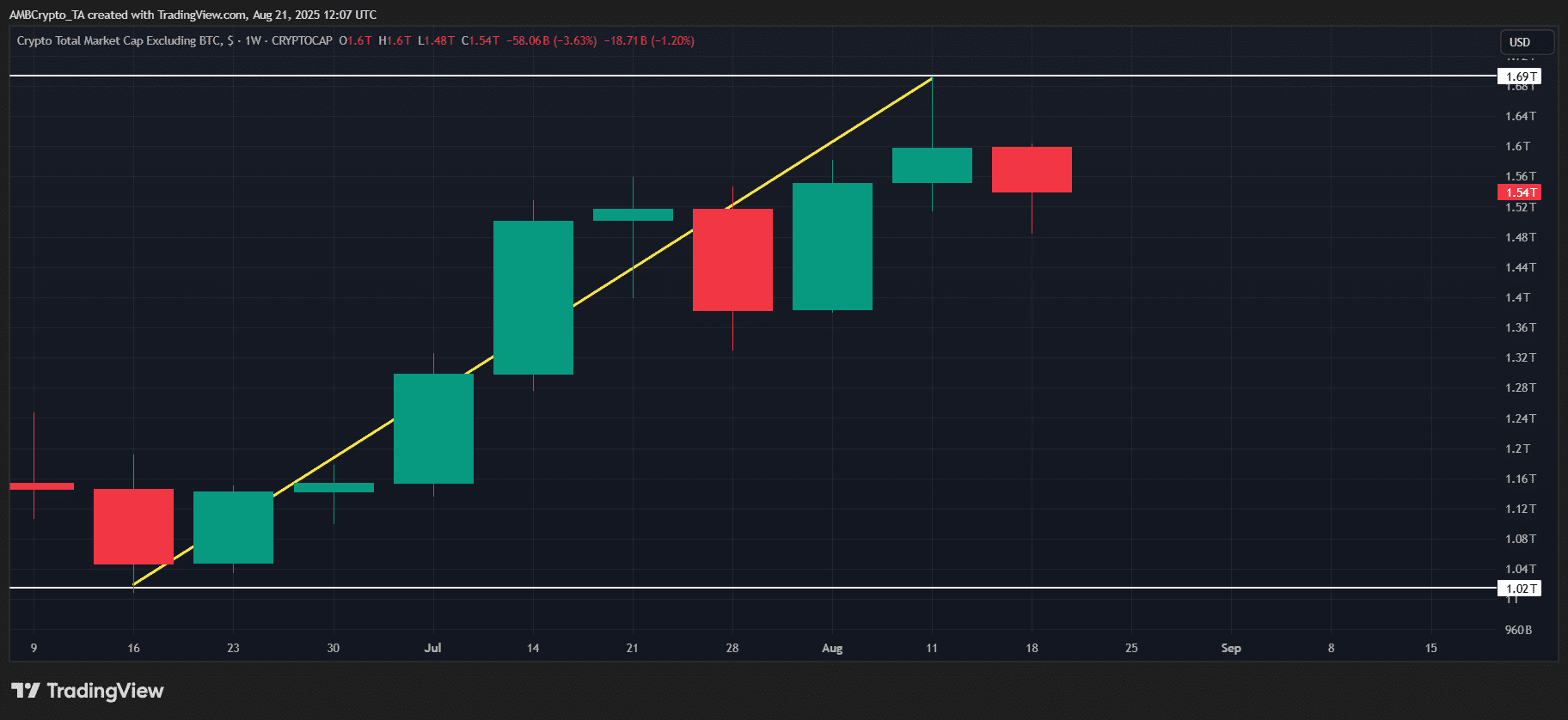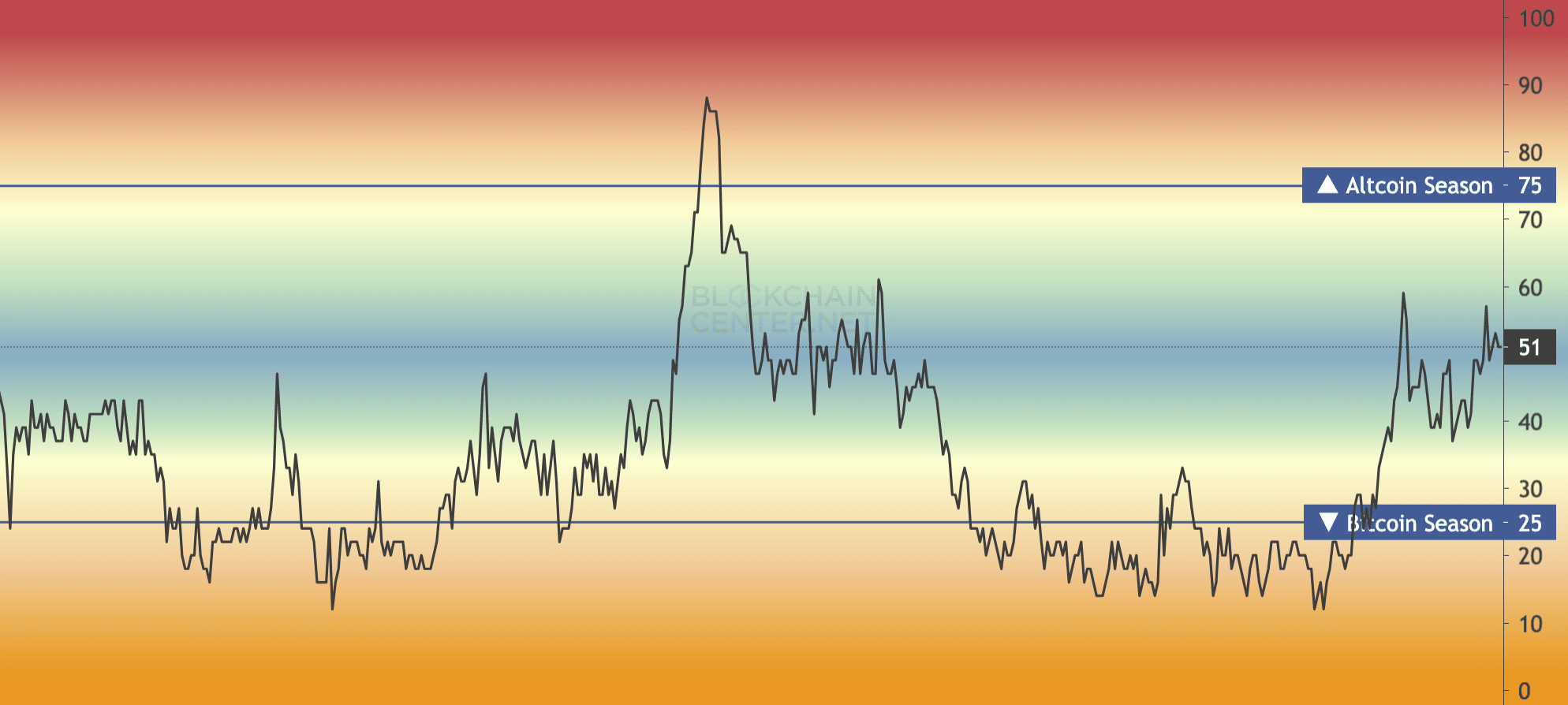Ten days have passed, but Bitcoin's dominance rate (BTC.D) remains held below the resistance level of 60%. Meanwhile, the market capitalization of Bitcoin (BTC) has lost about $230 billion compared to the peak of $2.48 trillion, corresponding to a decrease of nearly 8% from the all-time high of $124,000.
This raises an important question: Is the transition phase of capital flow into altcoins approaching?
Initial signs: The shift in market capitalization
Recall that at the end of June, BTC.D peaked at 65% before declining by about 6% – the largest drop since the election. At that time, the TOTAL2 index (market capitalization excluding BTC) surged sharply from $1 trillion to $1.7 trillion in just two months.

It is noteworthy that this is not a typical rotation. Instead of withdrawing capital from BTC, the market is witnessing an 'altcoin' cycle, as Bitcoin finds a bottom around $100,000 before entering a new price exploration phase. In other words, capital remains in the market but shifts to altcoins in search of higher profits.
To reinforce this scenario, the Altcoin Season Index has risen from 22 to 51 – a significant improvement compared to the post-election period. However, this index has not yet reached the threshold of 75 to officially confirm an 'altcoin season'. This means that, even though altcoins are showing signs of recovery, there are still many doubts as to whether this cycle has enough strength to truly explode.

As Bitcoin pauses – Do Altcoins have a chance to shine?
In recent days, Bitcoin has failed to hold the $117,000 mark as it fell from the resistance zone without turning it into support. With risk appetite in the market still low, capital is likely to temporarily flow into alternative assets.
However, the psychological factor is not yet fully supportive. Data from Google Trends shows that the search volume for the term 'altcoin season' has decreased by up to 50% in just one week. After peaking at 100 points on August 13, this figure has now dropped to 13 – a clear signal that the FOMO (fear of missing out) sentiment has not really emerged, and thus, the risk capital flowing into altcoins remains cautious.

Comparison with election cycles
In the post-election period, BTC.D quickly fell to 54% in just three weeks, while TOTAL2 surged to $1.7 trillion. At the same time, the Altcoin Season Index not only surpassed 75 but also reached above 85 – confirming a booming altcoin season.
Currently, the story is different. BTC.D and TOTAL2 are moving in tandem, but the altcoin season index is still stuck around 50, far from the threshold needed to trigger a true cycle. This means that, although the market is showing initial signs of a shift, the FOMO explosion has not yet occurred.
Altcoins may be facing a new opportunity as Bitcoin stagnates, but for a true altcoin season to form, the market needs stronger catalysts. The sentiment index, capital flow, and investor interest are still not enough to create a widespread growth wave like in previous cycles.
In the short term, this could be an important accumulation phase – where patient altcoin investors will have an advantage if a true explosion scenario occurs in the near future.
